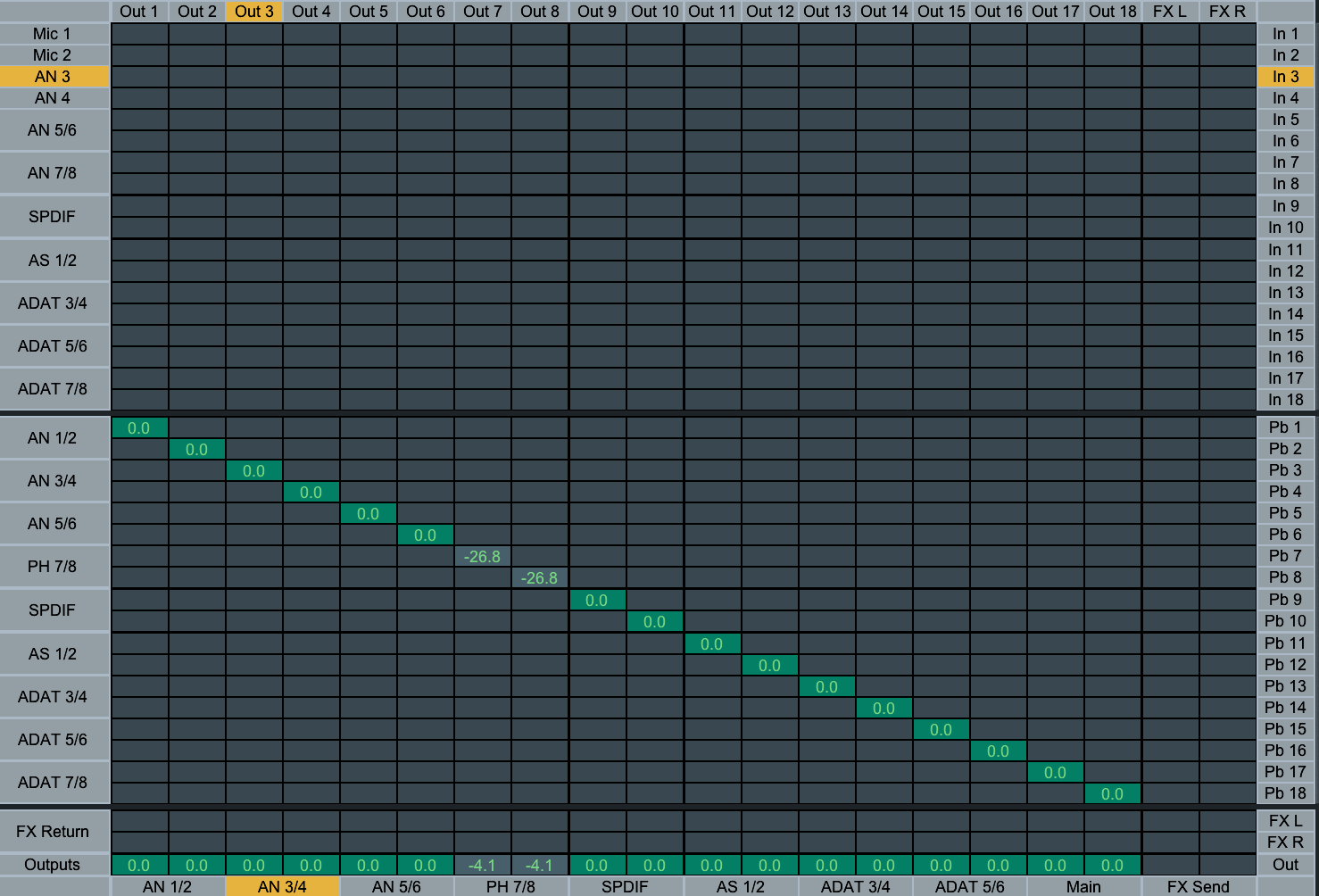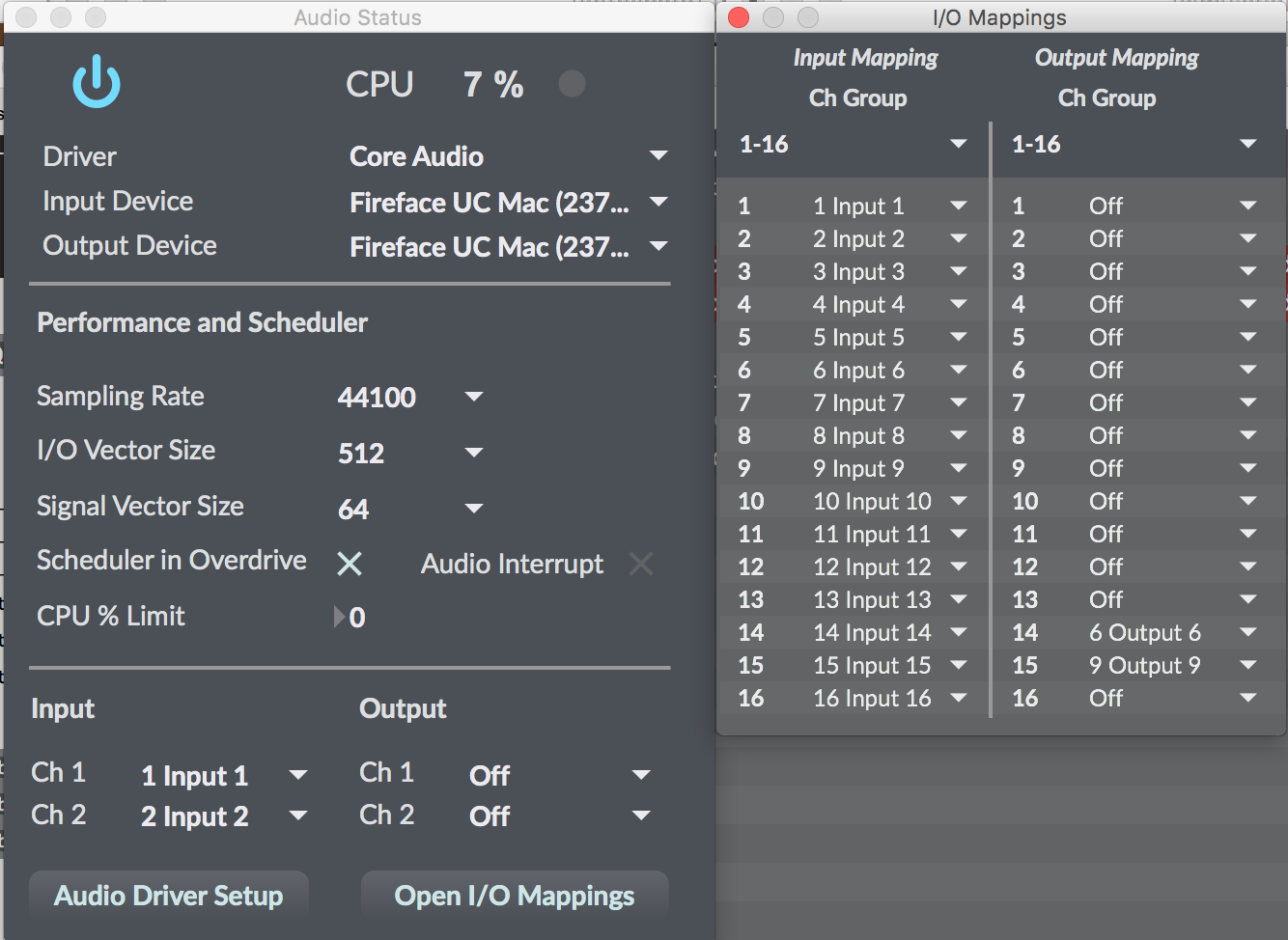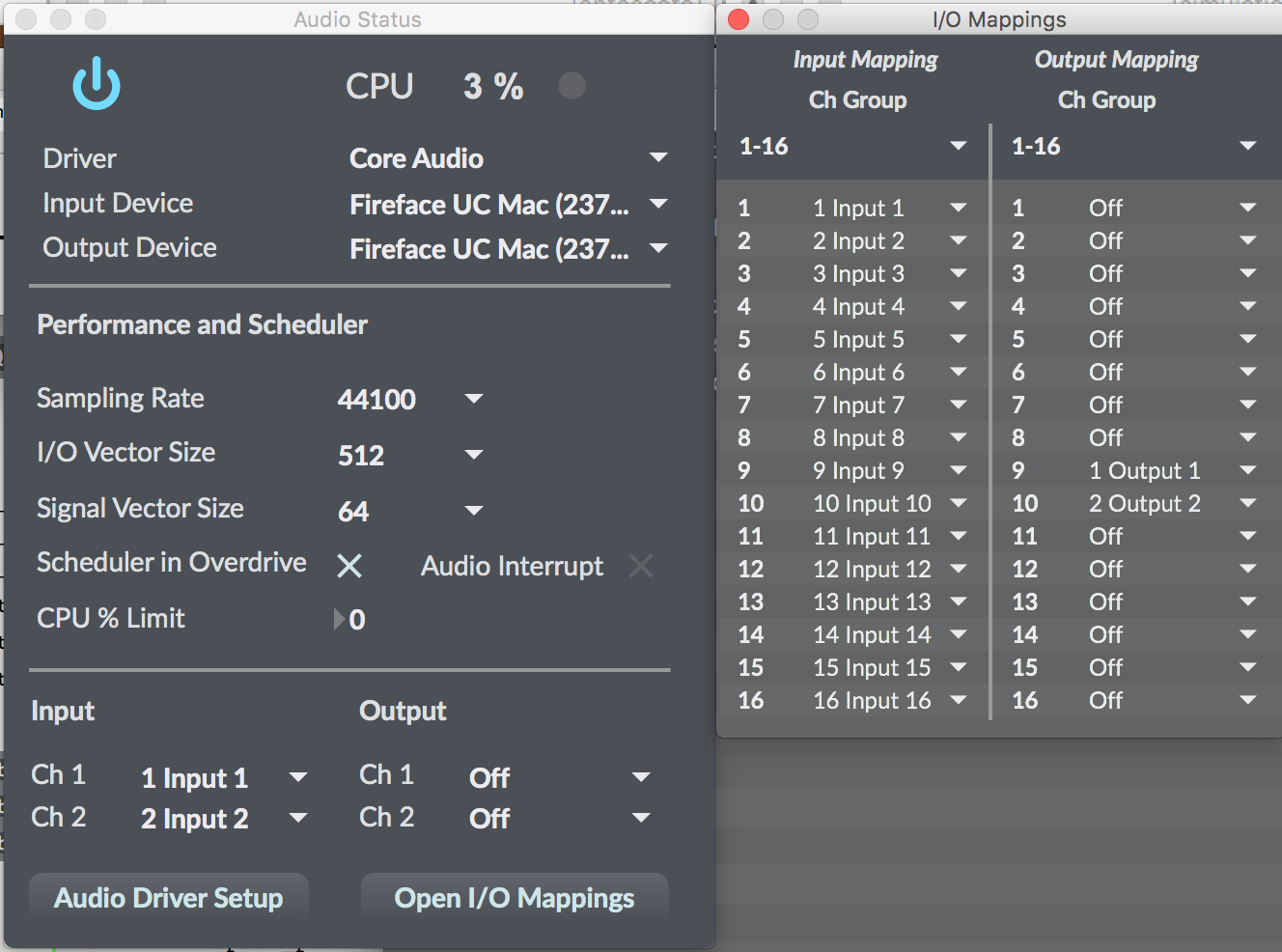Table of contents
Documentation date: 26 août 2021
Version state
Valid
Validation date: 20 décembre 2021
Version documentalist
- lemouton (Serge.Lemouton@ircam.fr)
Version realisation
- Serge Lemouton (Computer Music Designer)
- Franck Berthoux (Sound engineer)
- Jacques Warnier (Computer Music Designer)
Version length
20 mnUpgrade Motivation
All the applications have been updated to MAX 8 - 64 bit.
An alternative, simplified but operational version of the software setup (all in one patch) is also provided.
Comment
Patch performed (light version) by Ensemble Orchestra Contemporain conducted by Bruno Mantovani in Brioude - (Festival de la Chaise Dieu, August 2021).
Partita 2 performed by Jacques Warnier and Hae Sun Kang (festival OFFBEAT Juhl-Sørensen).
Some corrections has to be made for the next version/performance : cf. Instructions below.
The electronic part, as well as the violin part are very similar to Partita 2.
A few discrepancies can be found in the antescofo score, but the max patches are identical.
Other version(s)
- Philippe Manoury - B-Partita (in memoriam Pierre Boulez) - LaMeije2021
- Philippe Manoury - B-Partita (in memoriam Pierre Boulez) - BiennaleDeVenise2018
- Philippe Manoury - B-Partita (in memoriam Pierre Boulez) - EOC-2017
- Philippe Manoury - B-Partita (in memoriam Pierre Boulez) - CollegeDeFrance2017
- Philippe Manoury - B-Partita (in memoriam Pierre Boulez) - Premiere
Detailed staff
- soliste : violon
- flûte, hautbois, clarinette, cor, trompette, 2 percussions, 2 violons, alto, contrebasse
Channel details
- Number of input channel : 1
- Number of output channel : 6
Electronic equipment list
Computer Music Equipment
-
1 Retina - Apple Laptops
(Apple)
-
1 iPad - Tablets
(Apple)
-
1 Max 8 - Max
(Cycling74)
version 8.1.11 -
1 antescofo~ - External objects
(Ircam)
version 0.91-53 (27 janvier 2016) -
1 BowedString~ - External objects
(Ircam)
-
1 samplor~ - External objects
(Cycling74)
samplor~ HD: version 3.92 (voice_stealing) (Aug 5 2021 - 12:00:34) -
1 Ircam Spat - Library
(Ircam)
-
1 Mira - Library
(Cycling74)
-
1 synful orchestra - Virtual Instruments
(Synful)
-
1 Fireface UC - Sound Board
(RME)
Audio Equipment
-
1 DPA 4061 - Condenser Microphones
(DPA)
-
6 Loudspeaker - Loudspeakers
-
1 subwoofer - Subwoofers
Work related information
Premiere
- 16 juin 2016, <p>Paris, Centre Pompidou, Grande Salle, Festival ManiFeste-2016</p>
Publisher :
- Durand
Realisation
- Serge Lemouton
Work length
- 23 mn
Useful links on Brahms
- B-Partita (in memoriam Pierre Boulez) pour violon solo et ensemble (2016), 23mn
- Philippe Manoury
| File | Author(s) | Comment | |
|---|---|---|---|
| Download [1,3 Gio] | Patch B-Partita patch light version | Serge Lemouton | |
| Download [6,2 Gio] | Patch B-Partita patches full version | Serge Lemouton |
Instructions
Partita 2 or B-Partita ?
The electronic part, as well as the violin part of Partita2 and B-Partita are very close.
The only difference on the Max patch side is :
- To play B-Partita start with B-Partita1.asco
- To play Partita2 start with Partita2.1.asco
Audio and Loudspeaker setup

Software installation
For CPU performance reasons, the electronic software is split in four patches running in parallel on the same computer :
- Partita-Deux-+3FC-10-2021.maxpat : The main patch
- score following (using antescofo)
- control of all the synthesis and transformation processes.
- The “three frequencies chord” (“3FC”) is an additive synthesis patch controlled by a continuous sound analysis of the violin.
- T_synful_03 : Synful synthesis used to play musical sequences.
- T_spat_17 : hexaphonic spatialisation
- T_String_06 : Two virtual physical model strings
T_synful_03,T_spat_17andT_String_06 are applications (built with max8).
All the required applications and patches can be launch at once by executing the _P2-2021-run.sh script in a terminal.
Files preferences
Max file preferences should point to :
- Partita2-Max8-2021/
- Partita2-Max8-2021/data/antescofo_scores2017
DSP Overview
This diagram shows the audio routing between the applications:

The audio lines from 9 to 16 are used to communicate between the different applications. The inputs should be connected to the outputs of the audio soundboard.
You can do it :
- with an optical fiber loop.
- or as loopbacks in the TotalMix fireface software :


The patches (or applications) communicate via Open Sound Control commands through network (UDP) messages and with audio via loopback or optic fiber link on the audio card.
DSP status and IOSetup
The IO mappings for each application should be set as shown below
Max
- IO VS : 1024
- VS : 128
- SR : 44100
- overdrive : on
- Scheduler in audio interrupt : off

String

Synful

Spat

After setting the DSP status, quit every application in order to save the settings.
System calibration and tests
On the main patch Partita-Deux-+3FC-10-2021, select antescofo in the menu “go to”.
(This menu contains shortcuts for easy access to important subpatches)

a window appears:

- Click on the bang (Number 1). It resets everything in antescofo.
- Choose a score (for example Partita2.1.asco).
- Choose the event you want to go to.
- Click on play and check that it commands all other patches.
- Calibrate antescofo by clicking in the p calibration in p antescofo.
Check the toggle “Calibrate $1”, the waveform must be close to 1:

Alternative version (max project)
A simpler solution is provided. The synful and string real time synthesis process being replaced by prerecorded samples. Everything run in on patch : no need for loopback in this version.
To start this version simply open the max project Partita2-2021.maxproj.
Simulation test
In the main patch, choose simulation in the “go to” menu.
This window opens:

There are several different recordings of the solo violin part, as snd/filage160712 or snd/filage170712.
- Start the follower in the antescofo window as it is explained in the initialization routine,
- Choose filage160712 for example (arrow number1),
- It will automatically check play in the simulation window (number 3), and you will see sound on the meter (number 4).
There are also markers on the recordings called “filage 170712” and “filage 160712”.
To begin for example at part 2, number 50 in the score, you can choose it in the window below the file name (number 2).
The simulation violin sound is routed to dac7.
Initialization routine
Run all the patches (2) and applications (3). (see Software installation)
Open the antescofo window located in the main patch with the “go to” menu
- Reset antescofo by clicking on the bang between score and jump to cue (arrow number 1)
- Wait 1 second.
- Choose the antescofo score partita2.1.asco
- Then you can :
- “start” (arrow number 6 in System calibration and tests, test “antescofo”) if you follow the musician or
- “play” (arrow number 4 in System calibration and tests, test “antescofo”) if you want to play the electronic part alone without following anything.
Patch presentation

You can stop the follower by unchecking “suivi” and follow evenements manually with the space bar.
MIDI mixer Setup
Faders of the midi mixer (BCF2000) are programmed to control some parameters during the concert:
| fader | initial value | ctl | chan |
|---|---|---|---|
| Master | 127 | 7 | 1 |
| Direct | 100 | 7 | 2 |
| string1 | 64 | 7 | 3 |
| string2 | 64 | 7 | 4 |
| 3fc | 64 | 7 | 5 |
| sampler | 64 | 7 | 6 |
| synful | 64 | 7 | 7 |
| fx (effects level) | 64 | 7 | 8 |
NB : There is also the possibility to control the internal mix with mira on an ipad instead of the midi mixer.
Performance notes
For the sound engineer
The violin must be amplified throughout the whole piece except between event I.5 and event I.18 with a crescendo between I.18 and I.19.
For the Computer Music Designer
The “Direct” fader controls also the level of the infinite reverb, it should be controlled carefully.
The level of the 3f synthesis process should be also carefully controlled with the “direct” fader during the “Perpetuum Mobile” section.
Score following (with antescofo) is automatic in most of this work except :
- event 1.1
- event 2.1
- event 2.29
- event 4.1
- event 5.1
IMPROVEMENTS (A TESTER)
From: Philippe Manoury philippe.manoury@gmail.com
Subject: Problèmes dans Partita II
Date: 4 November 2021 at 17:12:18 CET
To: Serge Lemouton serge.lemouton@ircam.fr
Cc: WARNIER Jacques JWarnier@cnsmdp.fr
Cher Serge,
Voici les passages qui ne marche pas bien dans Partita II. Je mets Jacques en copie.
Sections II
23 : C’est souvent le cas, lorsqu’il y a des sections très courtes avec les pizz qui doivent piloter la 3F, ça ne marche pas bien. Est-ce qu’on ne peut pas faire qqchose dans ces cas ? Lancer l’evt avant et faire jouer les notes dès que le micro reçoit un signal (quelque soit la note jouée par le violon) ?
39 : Idem
52 : l’évt Synful en triolets (qui deviendra quintolet plus tard) s’arrête avant la fin (peut-être en 64 je ne me rappelle plus) mais il ne va pas à son terme qui doit être 68
Et puis il y a le problème des tempi. Est-ce qu’ils sont fixés en dur maintenant (par exemple en 49, 51, 55, 63) ? Ce n’est pas le but du jeu. Sinon on fera carrément de la musique sur bande.
Sections V : Le premier evt ne marche pratiquement jamais. Il doit y avoir de la 3F or elle ne commence presque toujours que dans la deuxième figure.
Les pizz ne déclenchent pas toujours un changement de spatialisation de la corde virtuelle. Très souvent ils ne font rien. Je pense qu’il faut abandonner la détection de hauteur mais de faire un azimut variable dès qu’il y a un pizz (quelque soit la note), par emple celui très important à la fin (en 22)
ph.m.
© IRCAM

This documentation is licensed under a Creative Commons Attribution-NonCommercial-NoDerivatives 4.0 International License.
Program note
C’est la troisième fois que Philippe Manoury utilise le terme « Partita » pour l’une de ses œuvres. Un terme aux fortes connotations baroques qui, pour le compositeur, fait référence à une œuvre pour instrument seul, non structurée par une forme préétablie. « Les Partitas de Bach, dit-il, sont des suites de danses sur lesquelles on ne danse pas et qui se distinguent des Sonates par une structure plus libre et plus diverse (7 ou 8 mouvements contre 4 pour les Sonates). Mes Partitas sont dédiées aux cordes (j’envisage d’en écrire une pour violoncelle et une autre pour contrebasse) et sont en un seul et unique mouvement – à l’instar de la Sonate pour piano de Liszt, de certaines Sonates de Scriabine ainsi que de celle de Berg. »
Dans B-Partita, un ensemble instrumental s’ajoute au noyau initial constitué par l’instrument soliste et l’électronique. L’œuvre est en fait un élargissement ou une extension de la [work:32040][Partita 2] , pour violon et électronique, suivant l’exemple des Sequenze et Chemins de Luciano Berio. La partie de violon ainsi que l’électronique de la [work:32040][Partita 2] sont pratiquement inchangées tandis que l’ensemble instrumental glisse ses commentaires et contrepoints dans les interstices laissés ouverts entre les diverses séquences de la partition d’origine.
La démarche d’écriture de certains de ces commentaires relève du palimpseste. Historiquement, le palimpseste désigne le réemploi d’un par chemin déjà utilisé – dans le cas présent, il s’agit plutôt de réécrire sur un canevas déjà écrit. Le terme de « palimpseste » sert d’ailleurs de sous-titre à la deuxième section de cette Partita. Certains traitements instrumentaux sont directement ou indirectement déduits des sonorités de synthèse, en cherchant, lorsque c’est possible, des analogies entre le monde instrumental et le tissu électronique existant.
Jérémie Szpirglas.
Note de programme du concert du 16 juin 2016 au Centre Pompidou.
None
Version documentation creation date: 17 novembre 2021 09:17, update date: 2 mai 2022 10:00